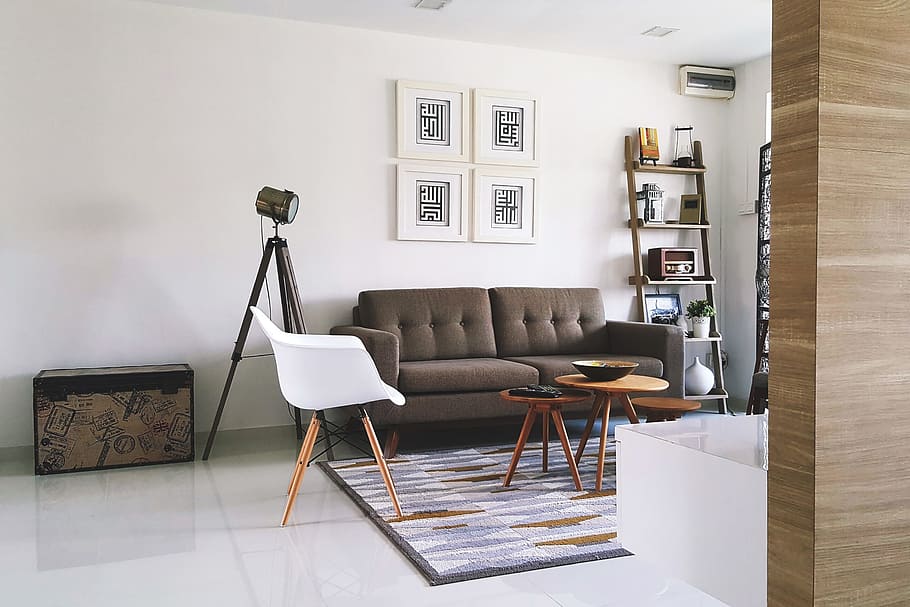Aesthetic Marvels: Exploring the Synergy of Architecture and Interior Design
Joe Howard -
In the world of design, few partnerships are as intertwined and harmonious as that of architecture and interior design. The marriage between these two disciplines creates a seamless fusion of artistry and functionality, resulting in spaces that are both visually captivating and purposeful. From towering skyscrapers to cozy homes, the collaboration between architects and interior designers allows for the creation of aesthetic marvels that leave lasting impressions on all who experience them.
Architecture serves as the backbone, shaping the physical structures that surround us. Its grandeur can inspire awe, showcasing the possibilities of human imagination and engineering prowess. The careful consideration of materials, proportions, and spatial layout gives rise to iconic buildings that define skylines and cities. Yet, it is the impact of interior design that truly brings these architectural marvels to life, transforming them into immersive environments that evoke emotion and cater to human needs.
Interior design breathes soul into the bones of architecture. By thoughtful selection and arrangement of furniture, color schemes, lighting, and decorative elements, spaces are elevated from mere structures to personalized havens and functional works of art. The skillful combination of form and function allows interior designers to envision and create environments that cater to the specific needs and desires of the people who will inhabit them.
Together, architecture and interior design form a powerful duo, synergistically blending exterior and interior aesthetics to create spaces that captivate the senses. The intricacy of architectural details, coupled with the warmth and coziness brought by interior design, results in holistic experiences that appeal to both our visual preferences and our emotional well-being. This symbiotic relationship between architecture and interior design showcases the profound impact that thoughtful design can have on how we perceive and interact with our surroundings.
In this article, we delve into the world of architecture and interior design, exploring the collaborative process, highlighting iconic examples, and unraveling the principles that make this partnership so essential. Join us on this journey as we uncover the magic created by the fusion of architecture and interior design, and discover how it shapes our built environment in ways that are not only aesthetically pleasing but also enriching to our lives.
The Influence of Architecture on Interior Design
Architecture and interior design go hand in hand, creating a harmonious relationship that enhances the overall aesthetic appeal of a space. The design of a building significantly influences the layout and functionality of its interior, setting the stage for the interior designer’s creative vision. From the structural elements to the overall style, architecture plays a vital role in shaping the interior design of a space.

First and foremost, the layout and structure of a building greatly impact the interior design possibilities. The placement of walls, columns, and windows determines the available space and natural light that can be utilized within the interior. For instance, an open floor plan with minimal walls allows for a seamless flow between rooms and encourages a modern, spacious interior design. On the other hand, a building with smaller rooms and numerous partitions may inspire a more traditional, compartmentalized approach to interior design.
Additionally, the architectural style of a building sets the tone and character of the interior design. Whether it is a sleek and contemporary skyscraper or a charming Victorian-era house, the architectural style provides a framework for the interior designer to work with. The choice of materials, color palette, and decorative elements often reflects the architectural style, ensuring a cohesive and visually pleasing design.
Moreover, the architectural features and details within a building can serve as focal points and inspiration for the interior design. Ornate moldings, grand staircases, or unique structural elements can be highlighted and incorporated into the interior design scheme. These architectural features can add a sense of drama, elegance, or historical context, creating a memorable and visually captivating space.
In conclusion, architecture and interior design are inseparable partners, with architecture providing the foundation and framework for the interior designer’s creative expression. The layout, structure, style, and features of a building greatly influence the interior design possibilities, enabling the creation of harmonious and aesthetically pleasing spaces. By understanding and embracing the influence of architecture on interior design, designers can create cohesive and captivating environments that delight and inspire.
The Role of Interior Design in Architectural Projects
Interior design plays a crucial role in enhancing the overall aesthetic and functionality of architectural projects. It goes beyond the mere arrangement of furniture and decor, intertwining with the very essence of the structure. It is the art of bringing life to the inner spaces, harmoniously complementing the architectural design to create truly captivating environments.
Through careful selection of materials, colors, and textures, interior design transforms architectural spaces into immersive experiences. It adds depth and character, creating a cohesive narrative that resonates with the building’s purpose and its visitors. The right combination of elements can evoke specific emotions, setting the tone for various activities within the structure.
Functionality is another vital aspect of interior design in architectural projects. An effective interior design plan ensures that spatial arrangements optimize usability and flow. It takes into account the practical needs of the occupants, be it in residential, commercial, or public spaces. From efficient kitchen layouts to ergonomic office setups, interior design considers the everyday interactions and activities that take place within the architecture.
Collaboration between architects and interior designers is essential to achieving a seamless integration of both disciplines. By working together from the early stages of a project, they can align their visions and create a unified design language that extends from the exterior to the interior. This collaboration ensures that the architectural form and spatial layout harmonize with the choice of materials, furniture, lighting, and other interior elements.
In conclusion, interior design holds a significant role in architectural projects by elevating spaces to new levels of beauty and functionality. It adds depth, personality, and purpose to buildings, turning them into artful spaces that inspire and captivate those who inhabit them. The synergy between architecture and interior design is essential in creating spaces that not only aesthetically please but also serve their intended purpose flawlessly.
Creating Harmonious Spaces: Collaboration between Architects and Interior Designers
Collaboration between architects and interior designers plays a pivotal role in creating harmonious spaces that seamlessly blend functionality and aesthetics. By working together, these two disciplines bring their unique expertise to the table, resulting in extraordinary designs that leave a lasting impression.
Architects, with their strong technical proficiency and knack for structural design, lay the foundation for the overall architectural composition. They envision the layout, form, and materials used in the construction of a building, ensuring its stability and functionality. Their attention to detail and understanding of spatial relationships provide a solid starting point for interior designers to work their magic.
Interior designers, on the other hand, possess a keen eye for aesthetics and a deep understanding of how spaces can be transformed into visually captivating environments. Their choice of colors, textures, furniture, and decorative elements bring life and personality to the architecture. By carefully curating these elements, interior designers add a layer of intimacy, creating spaces that resonate with the intended purpose and evoke emotions in those who experience them.
The collaboration between architects and interior designers is a delicate dance, requiring effective communication and mutual respect. Architects provide the canvas on which interior designers can paint their creative vision while taking into account functional requirements and structural constraints. Through dialogue and a shared vision, a symbiotic relationship is born that allows for the creation of spaces that are not only visually stunning but also highly functional.
In conclusion, the fusion of architecture and interior design is a powerful synergy that results in breathtaking spaces. The collaboration between architects and interior designers brings together technical expertise, creative vision, and a deep understanding of human experience in order to create harmonious environments that leave an indelible mark on all who encounter them.
Archives
- November 2025
- October 2025
- September 2025
- August 2025
- July 2025
- June 2025
- May 2025
- April 2025
- March 2025
- February 2025
- January 2025
- December 2024
- March 2024
- February 2024
- January 2024
- December 2023
- November 2023
- October 2023
- September 2023
- August 2023
- July 2023
- June 2023
- May 2023
- April 2023
- March 2023
- February 2023
- January 2023
- December 2022
- November 2022
- October 2022
- September 2022
- August 2022
- July 2022
- June 2022
- May 2022
- April 2022
- March 2022
- February 2022
- January 2022
Calendar
| M | T | W | T | F | S | S |
|---|---|---|---|---|---|---|
| 1 | 2 | 3 | 4 | 5 | 6 | 7 |
| 8 | 9 | 10 | 11 | 12 | 13 | 14 |
| 15 | 16 | 17 | 18 | 19 | 20 | 21 |
| 22 | 23 | 24 | 25 | 26 | 27 | 28 |
| 29 | 30 | 31 | ||||